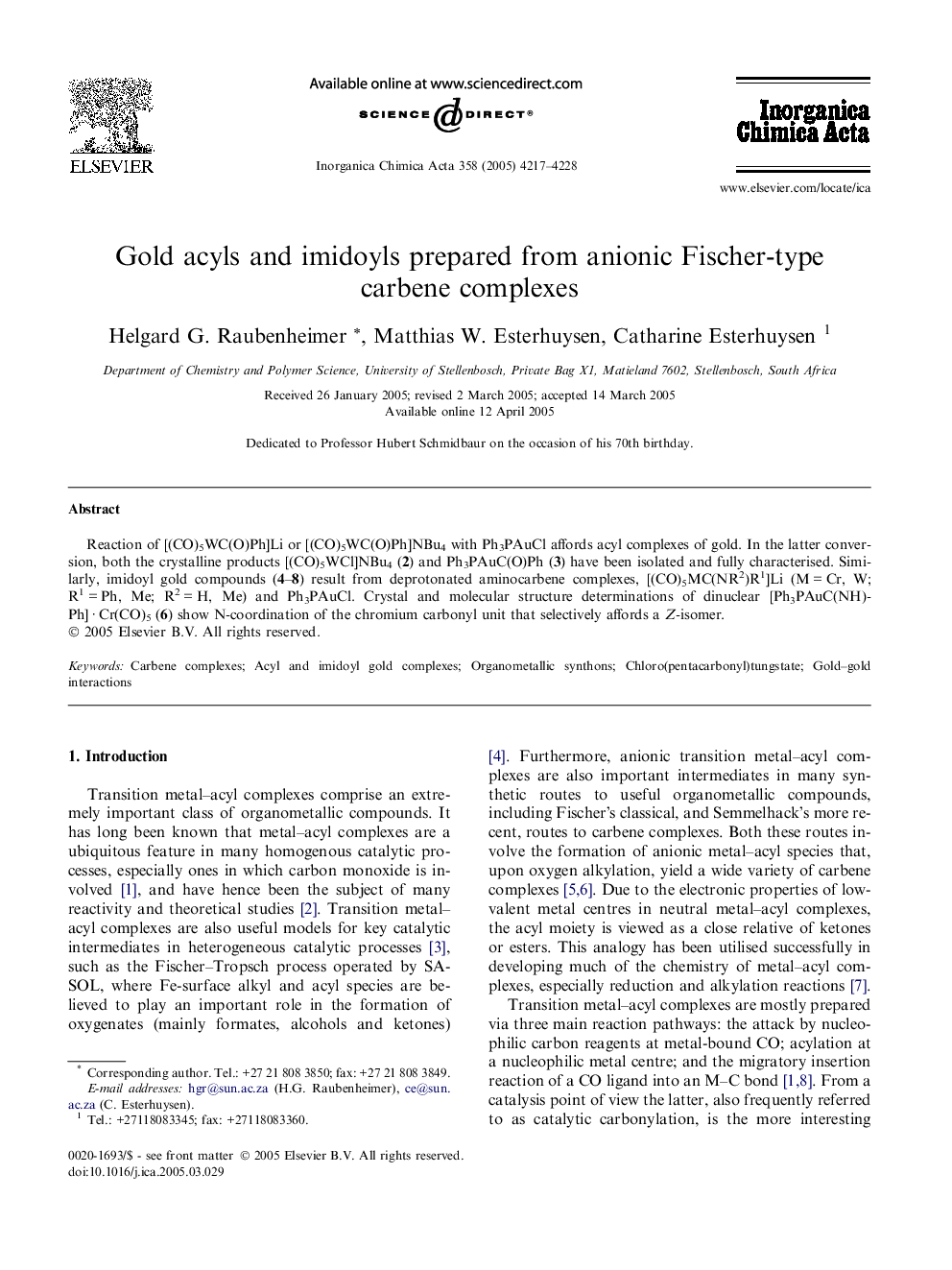| Article ID | Journal | Published Year | Pages | File Type |
|---|---|---|---|---|
| 1308396 | Inorganica Chimica Acta | 2005 | 12 Pages |
Reaction of [(CO)5WC(O)Ph]Li or [(CO)5WC(O)Ph]NBu4 with Ph3PAuCl affords acyl complexes of gold. In the latter conversion, both the crystalline products [(CO)5WCl]NBu4 (2) and Ph3PAuC(O)Ph (3) have been isolated and fully characterised. Similarly, imidoyl gold compounds (4–8) result from deprotonated aminocarbene complexes, [(CO)5MC(NR2)R1]Li (M = Cr, W; R1 = Ph, Me; R2 = H, Me) and Ph3PAuCl. Crystal and molecular structure determinations of dinuclear [Ph3PAuC(NH)Ph] · Cr(CO)5 (6) show N-coordination of the chromium carbonyl unit that selectively affords a Z-isomer.
Graphical abstractFormal exchange of M(CO)5 (M = Cr or W) for Ph3PAu+ occurs when anionic Fischer-type carbene complexes react with Ph3PAuCl to furnish novel free acyl and dinuclear imidoyl complexes of gold. In the latter reaction, the carbonylmetal unit is strongly bonded to the imine nitrogen of the formed gold complex in a selectively obtained Z-configuration.Figure optionsDownload full-size imageDownload as PowerPoint slide
